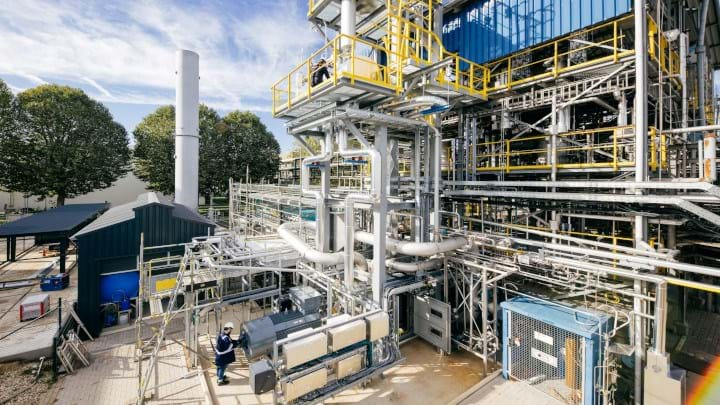Coolbrook successfully cracks naphtha in its electric steam cracking pilot plant

COOLBROOK has successfully demonstrated electric steam cracking of naphtha in its large-scale pilot plant in Brightlands Chemelot Campus, the Netherlands.
According to the firm, the tests have validated the potential of replacing traditional fossil fuel-based cracker furnaces with electric RotoDynamic Reactors (RDR) in the petrochemical industry. Not only do they help to decarbonise processes, but process efficiency is also significantly improved which reduces the demand for feedstocks, and enables higher circularity in plastics and other materials, Coolbrook said.
Conventional steam cracking furnaces rely on heat from burning fossil fuels that is applied on the outside of a reaction zone through a tube wall to break down hydrocarbons into olefins and aromatics used in chemical production.
Coolbrook’s RDR technology, however, uses high-velocity rotor blades to create thermal energy to heat the mixture inside the reaction zone, quickly and much more efficiently.
And, as the process uses electricity, the RDR has the potential to reduce process CO2 emissions from steam cracking by 100%, the firm said.
Together with the RotoDynamic Heater (RDH) technology, which also passed a series of successful tests last year, the combined CO2 emission reduction potential of both technologies is in excess of 2.4bn t/y. This corresponds to 30% of global industrial CO2 emissions and 7% of all global CO2 emissions, Coolbrook said. The RDH is targeted primarily at other sectors that are also hard to abate and electrify, such as chemicals, steel, and cement.
Joonas Rauramo, CEO of Coolbrook said: “The successful cracking of naphtha in our large-scale pilot reinforces Coolbrook’s position as clear leader in electric steam cracking. We look forward to finalising the pilot tests and deploying the RDR technology at customer sites together with our industry forerunner customers and technology partners to enable transitioning to net zero in a cost and energy-efficient manner.”
With a successful demonstration now under its belt, Coolbrook said it will continue performance testing and optimisation of the reactor. It then aims to deploy the RDR technology at industrial scale, and integrated to customer projects, with the first projects to be launched this year.
The company has already partnered with Linde, which has licensed and built more than 70 steam crackers worldwide, with an aim to integrate the RDR technology into existing and new ethylene plants.
Recent Editions
Catch up on the latest news, views and jobs from The Chemical Engineer. Below are the four latest issues. View a wider selection of the archive from within the Magazine section of this site.




